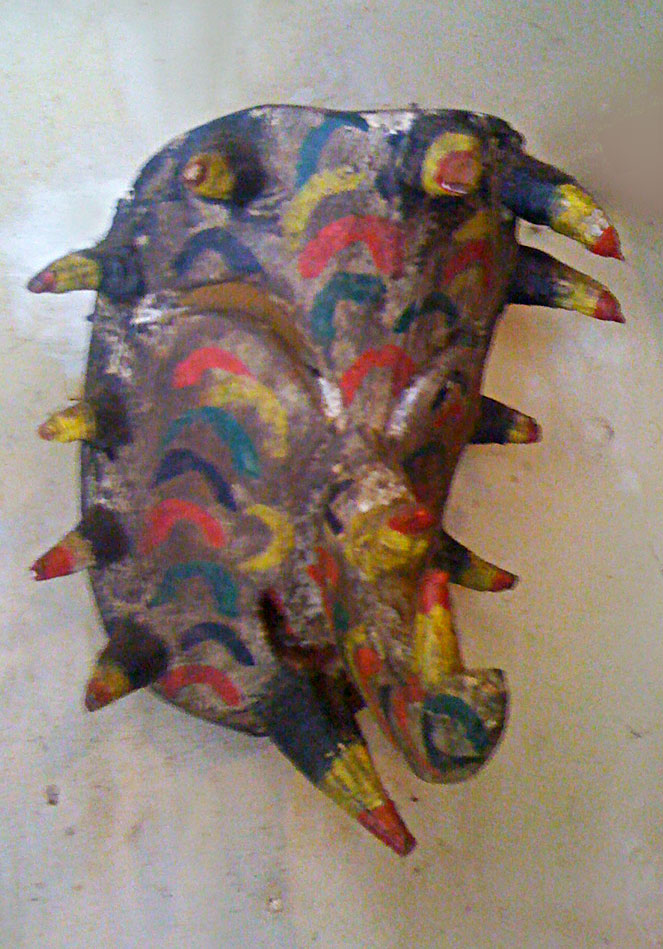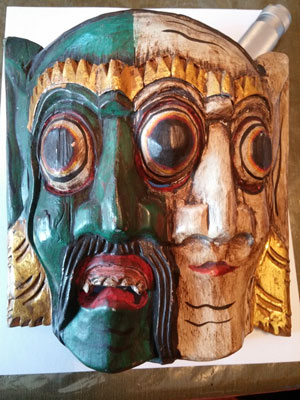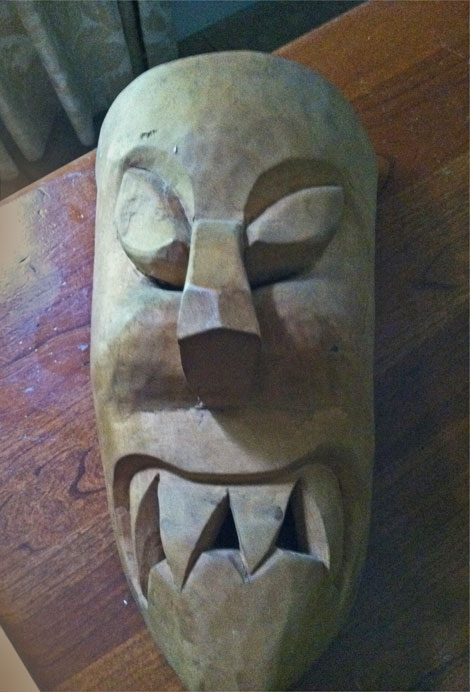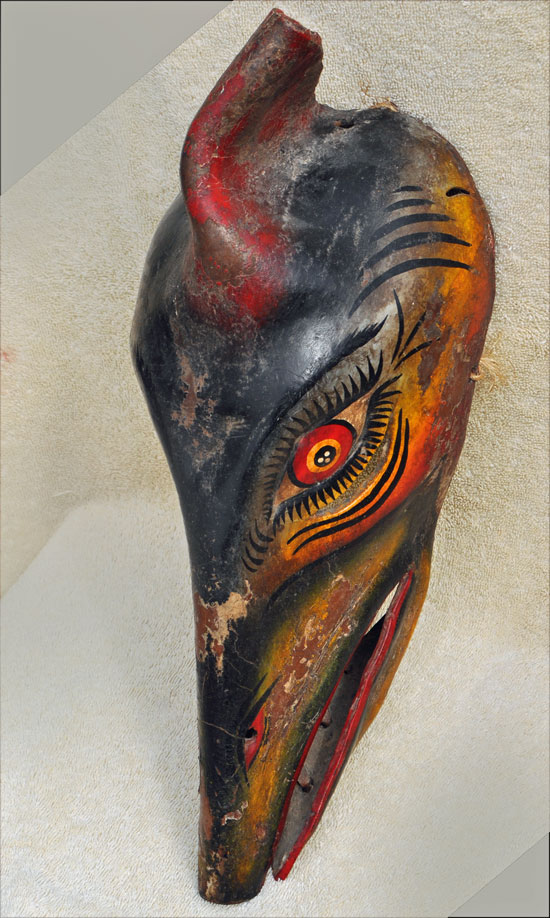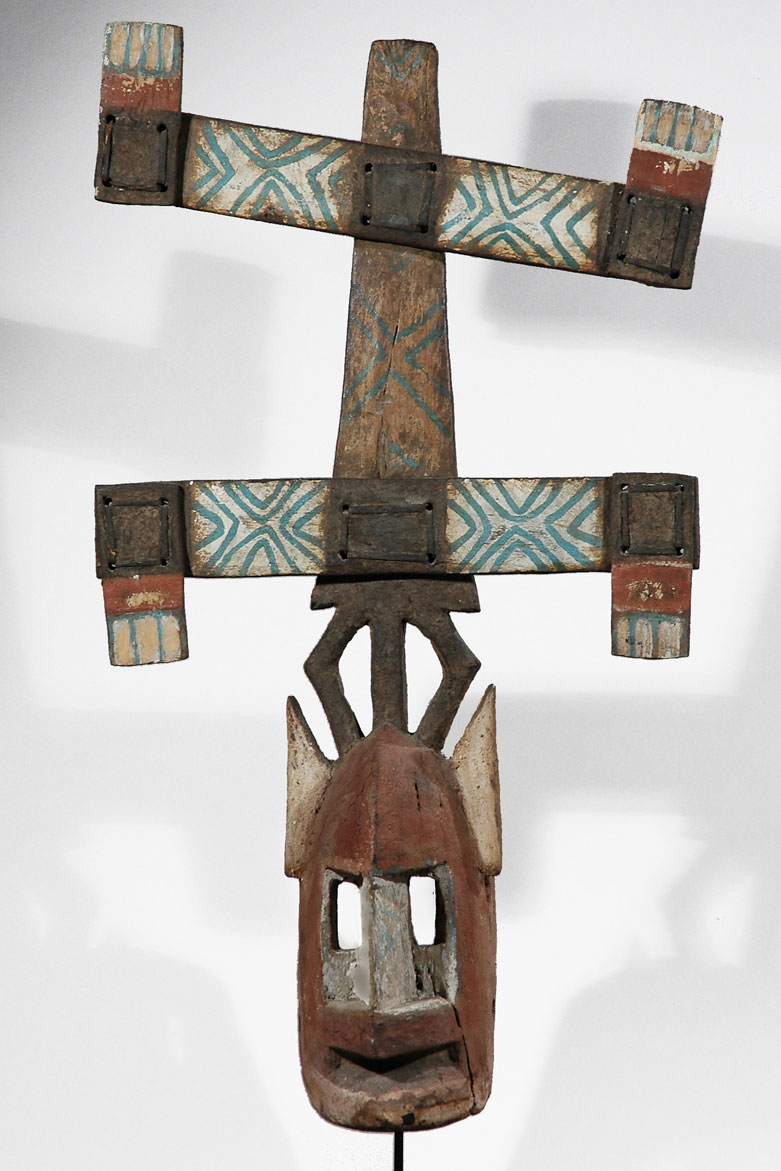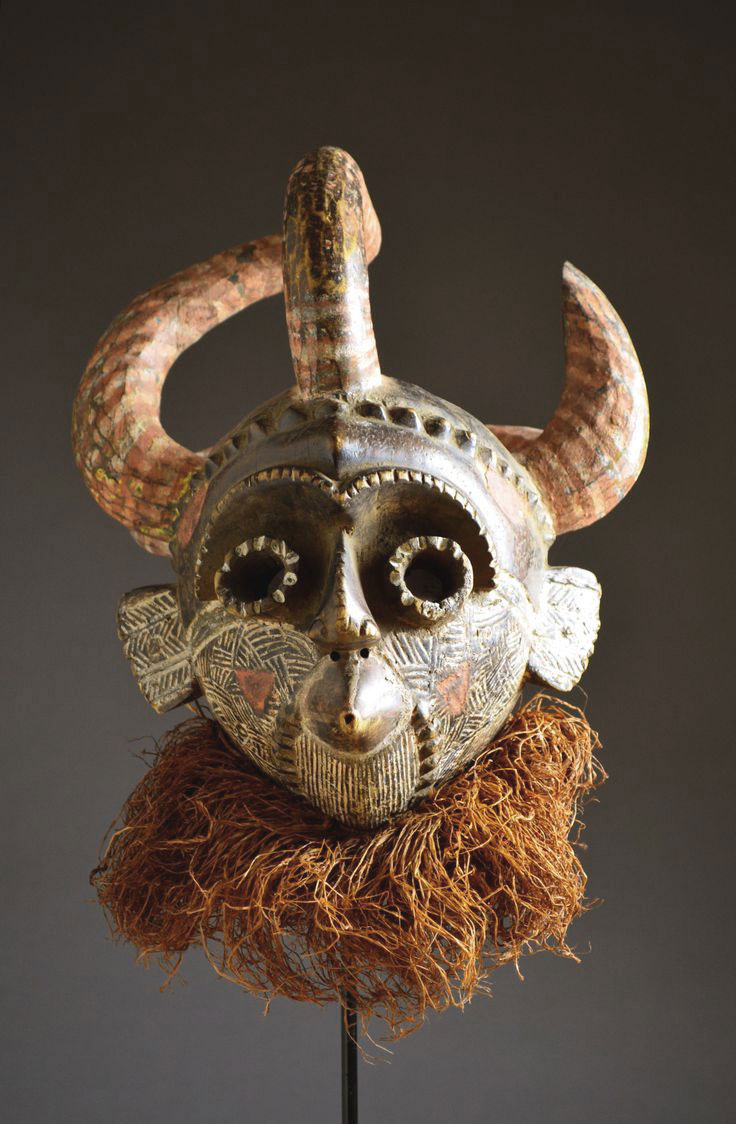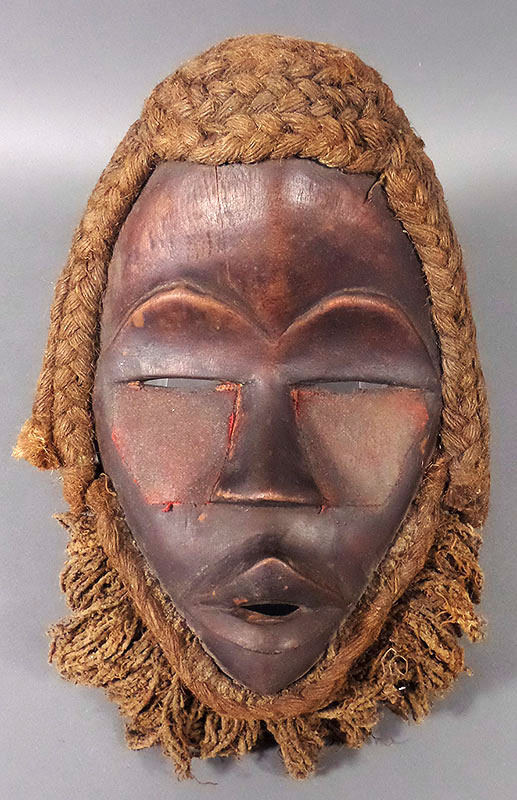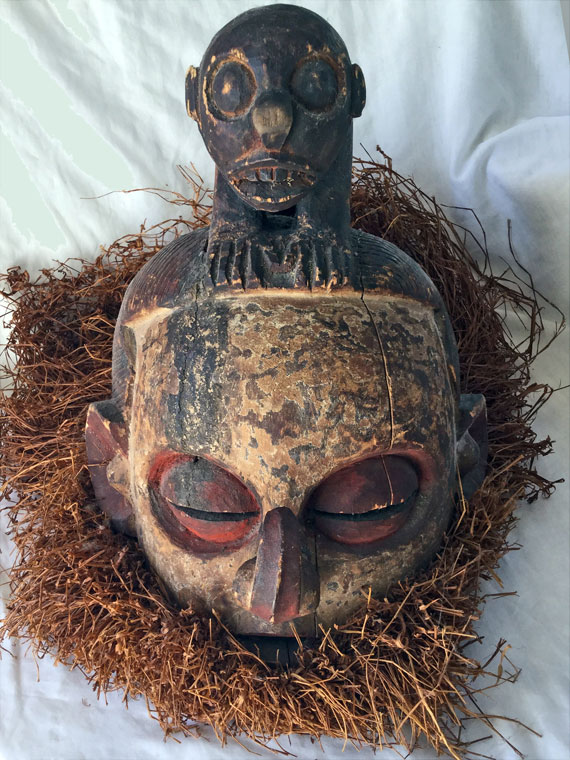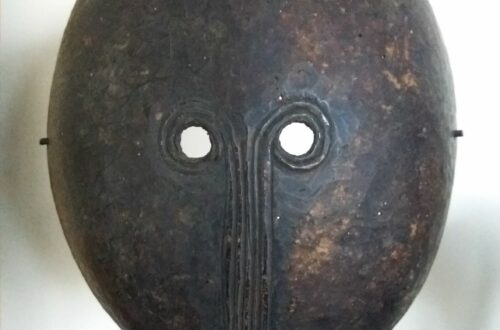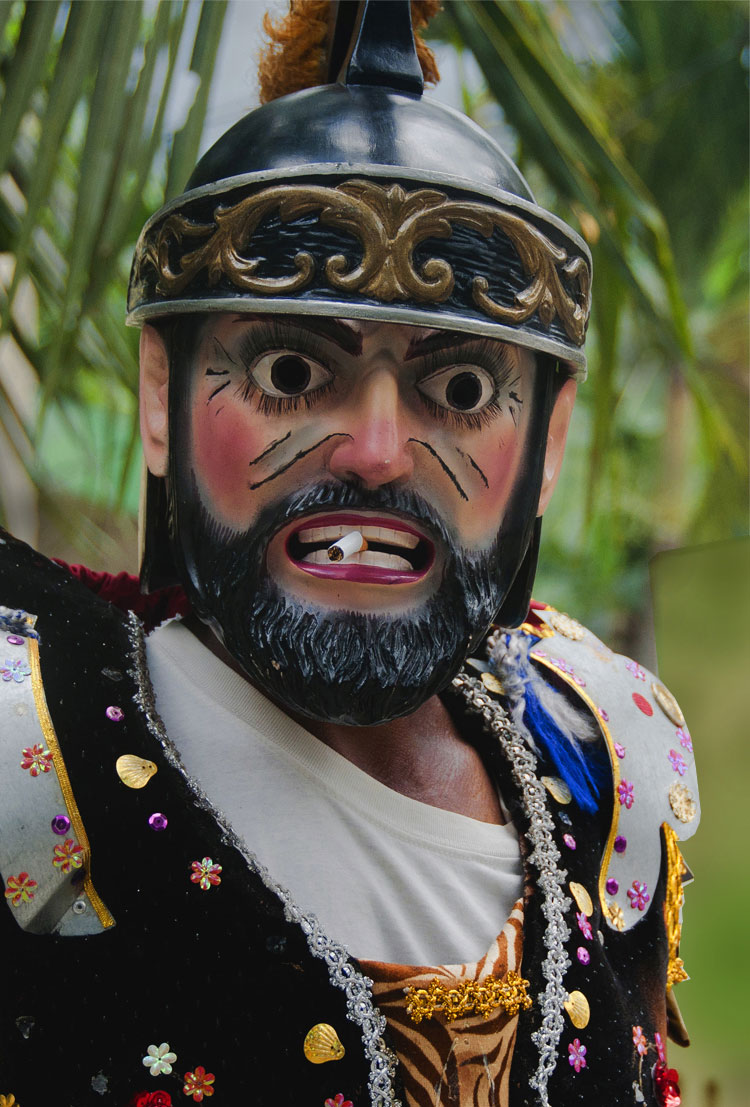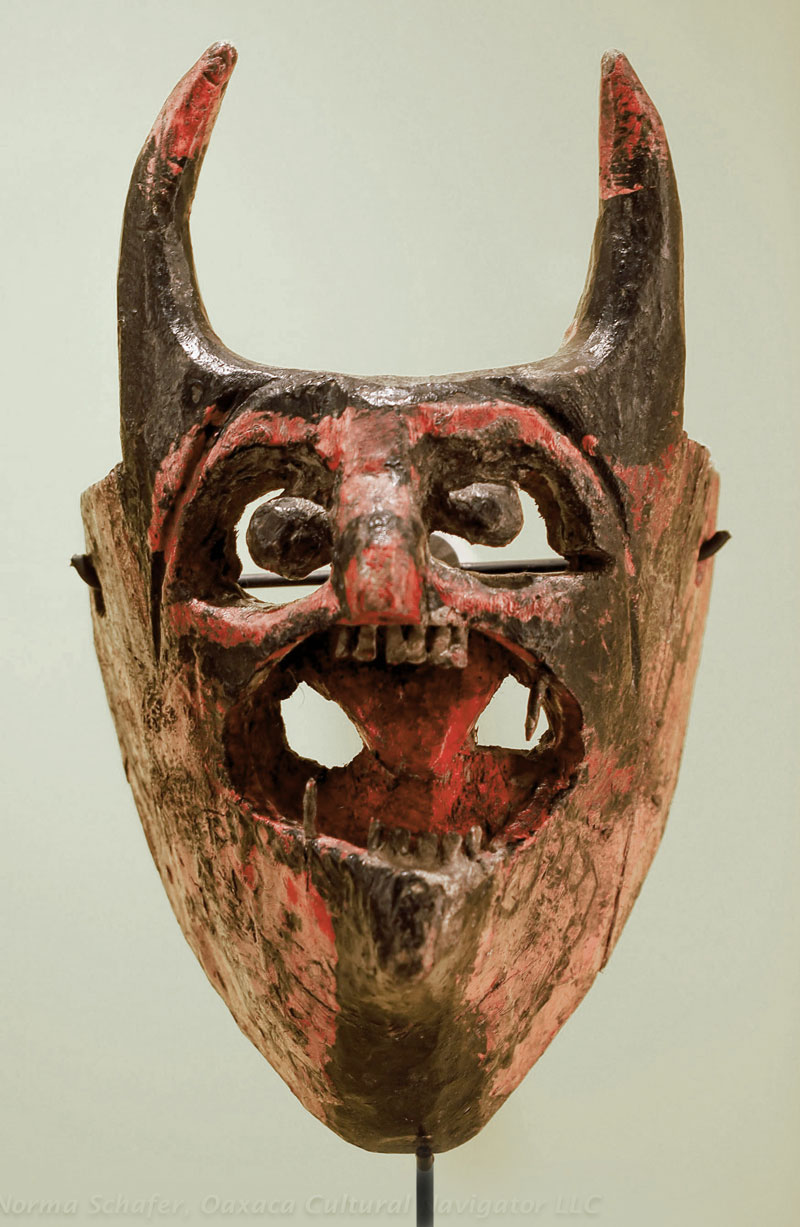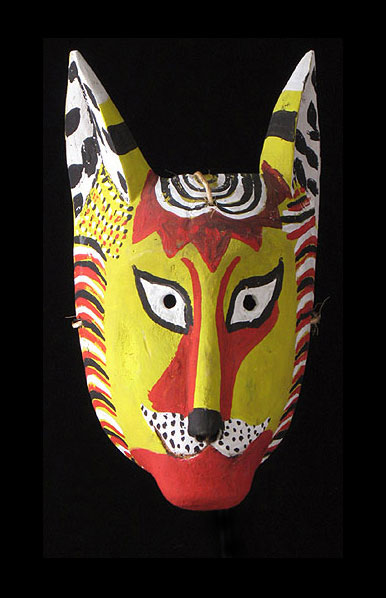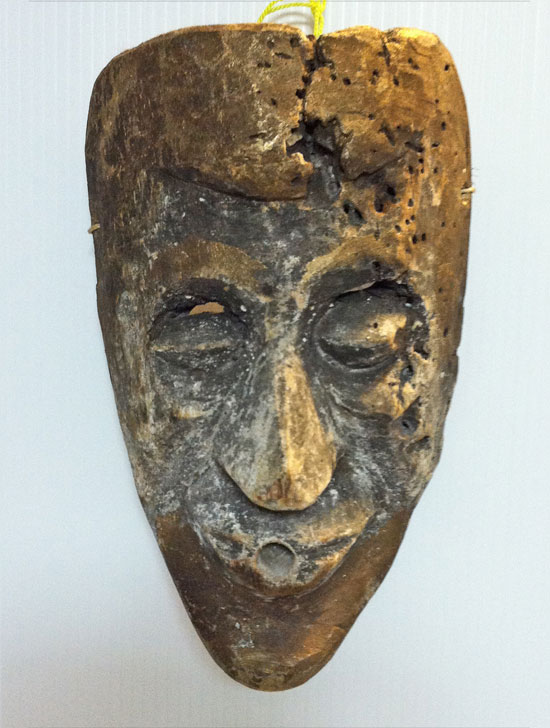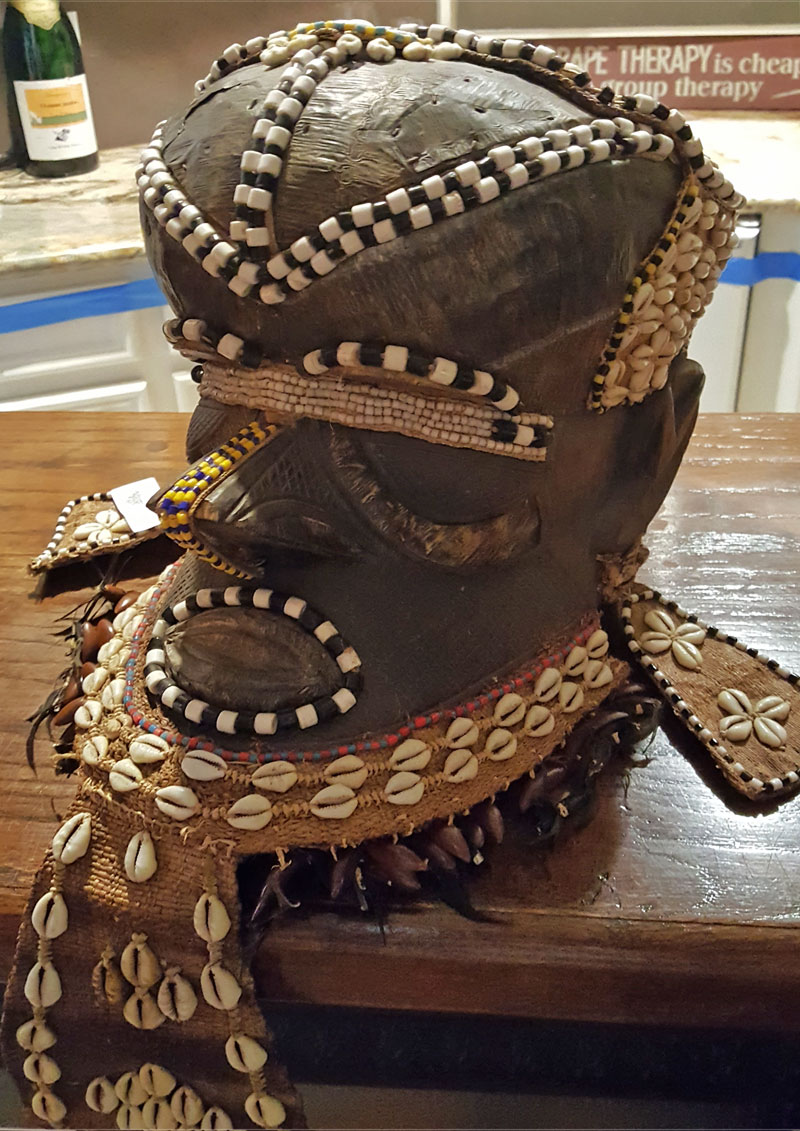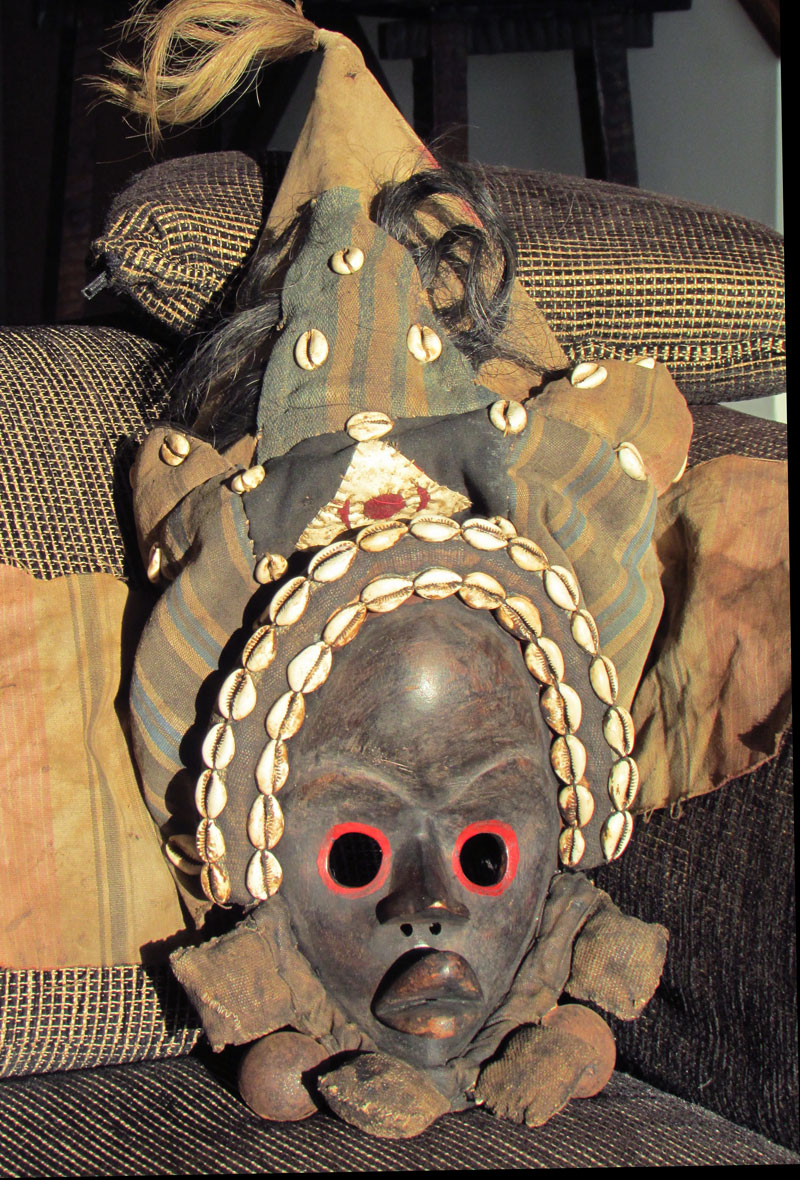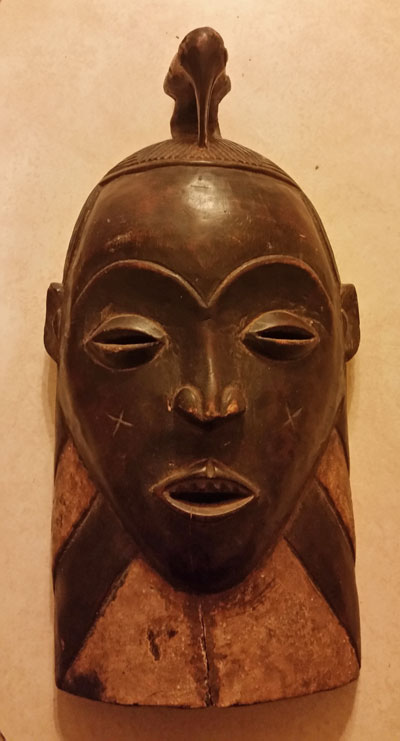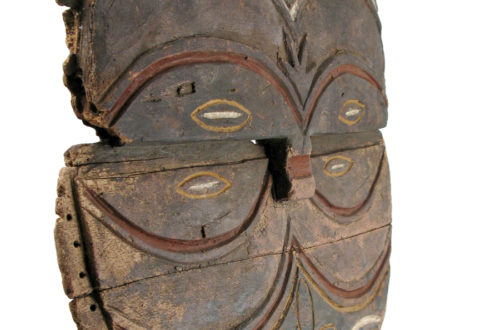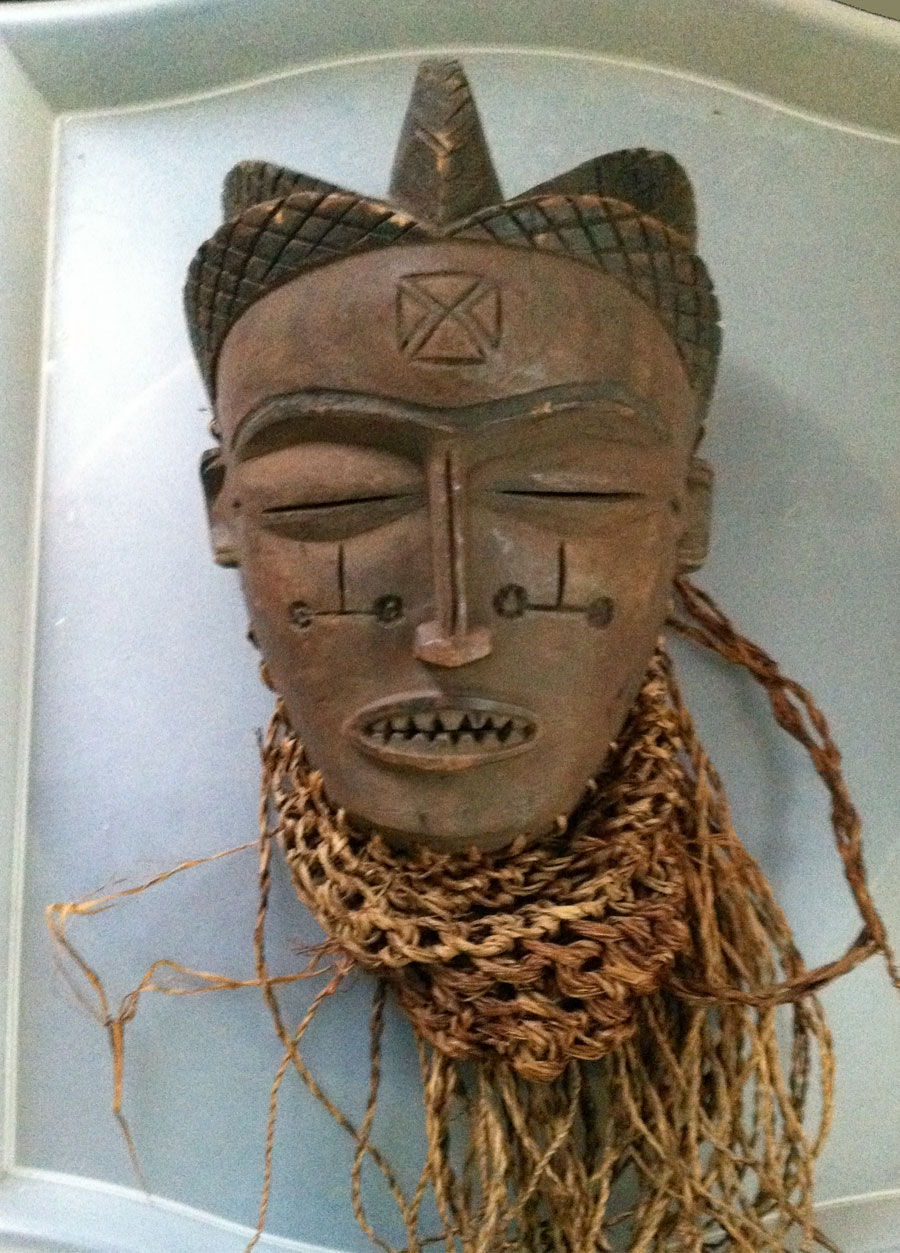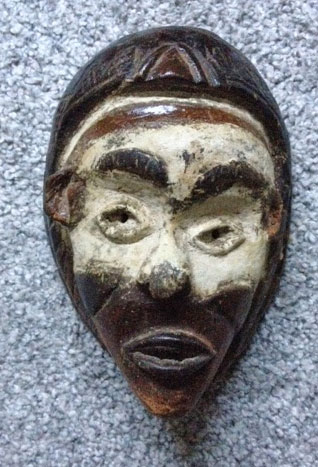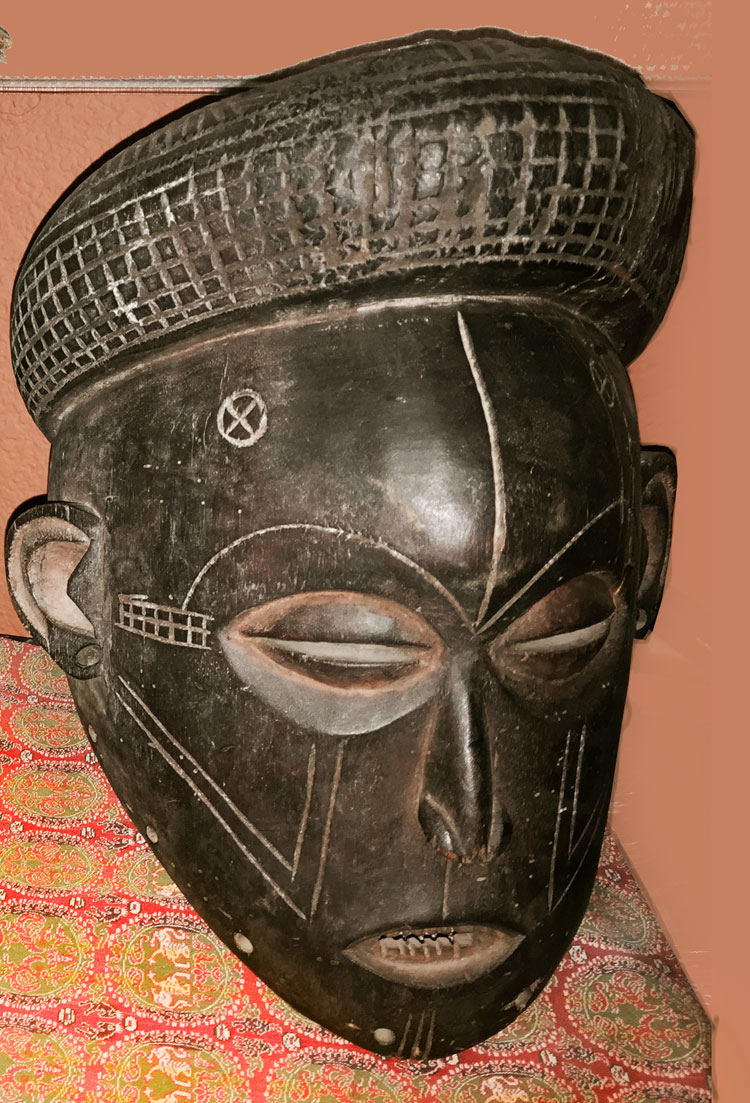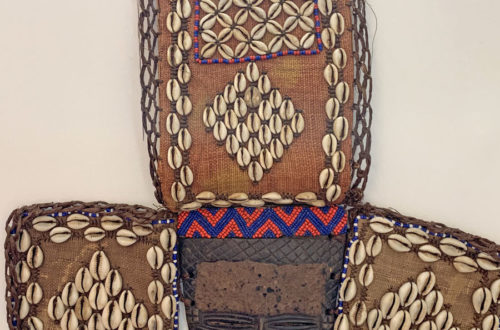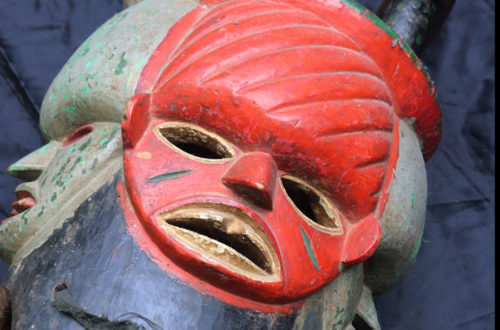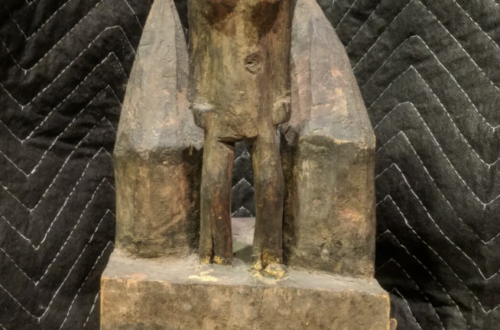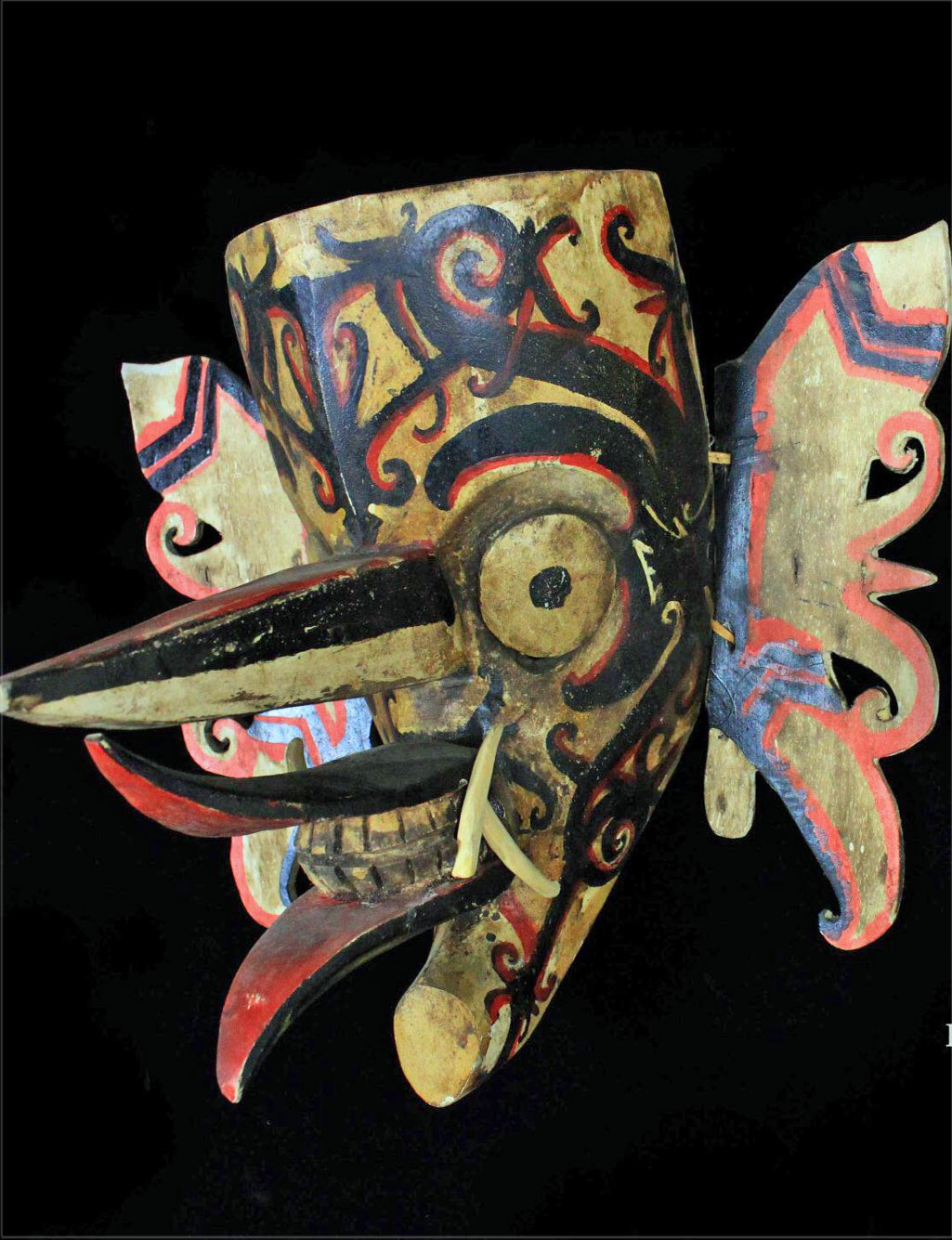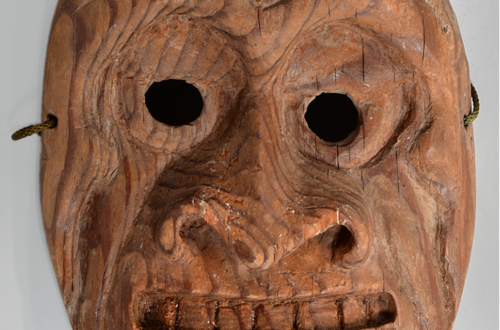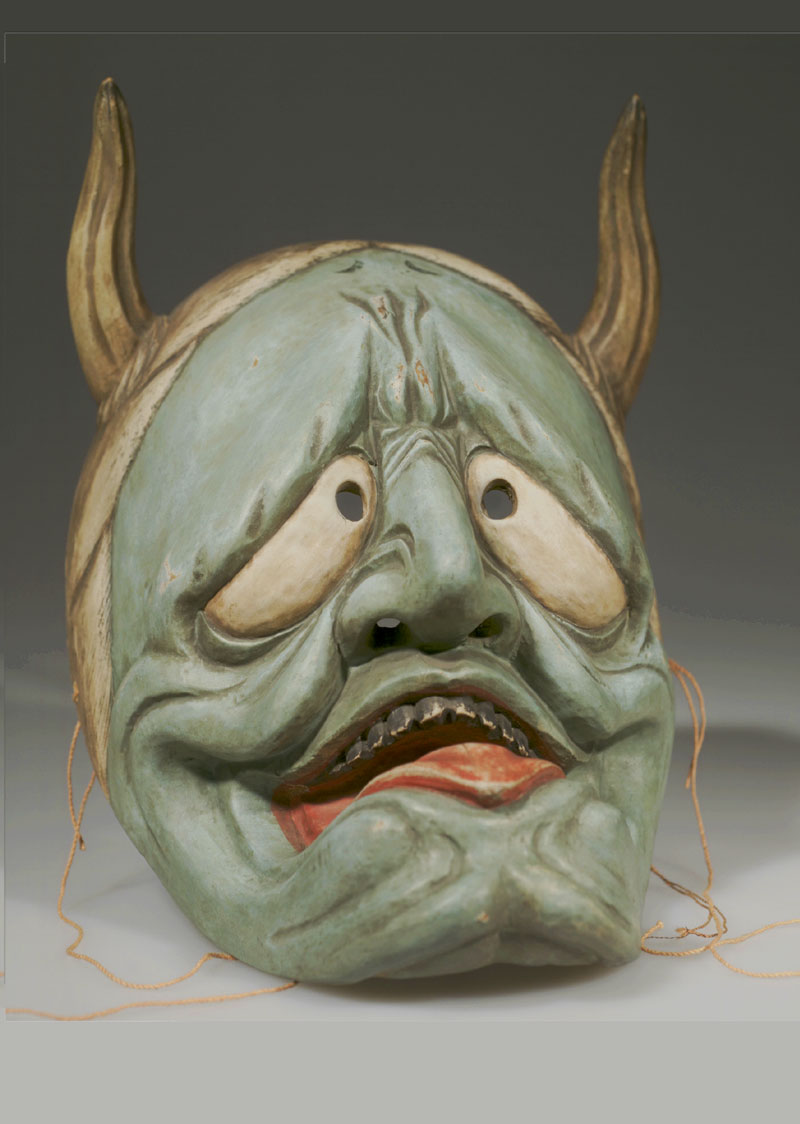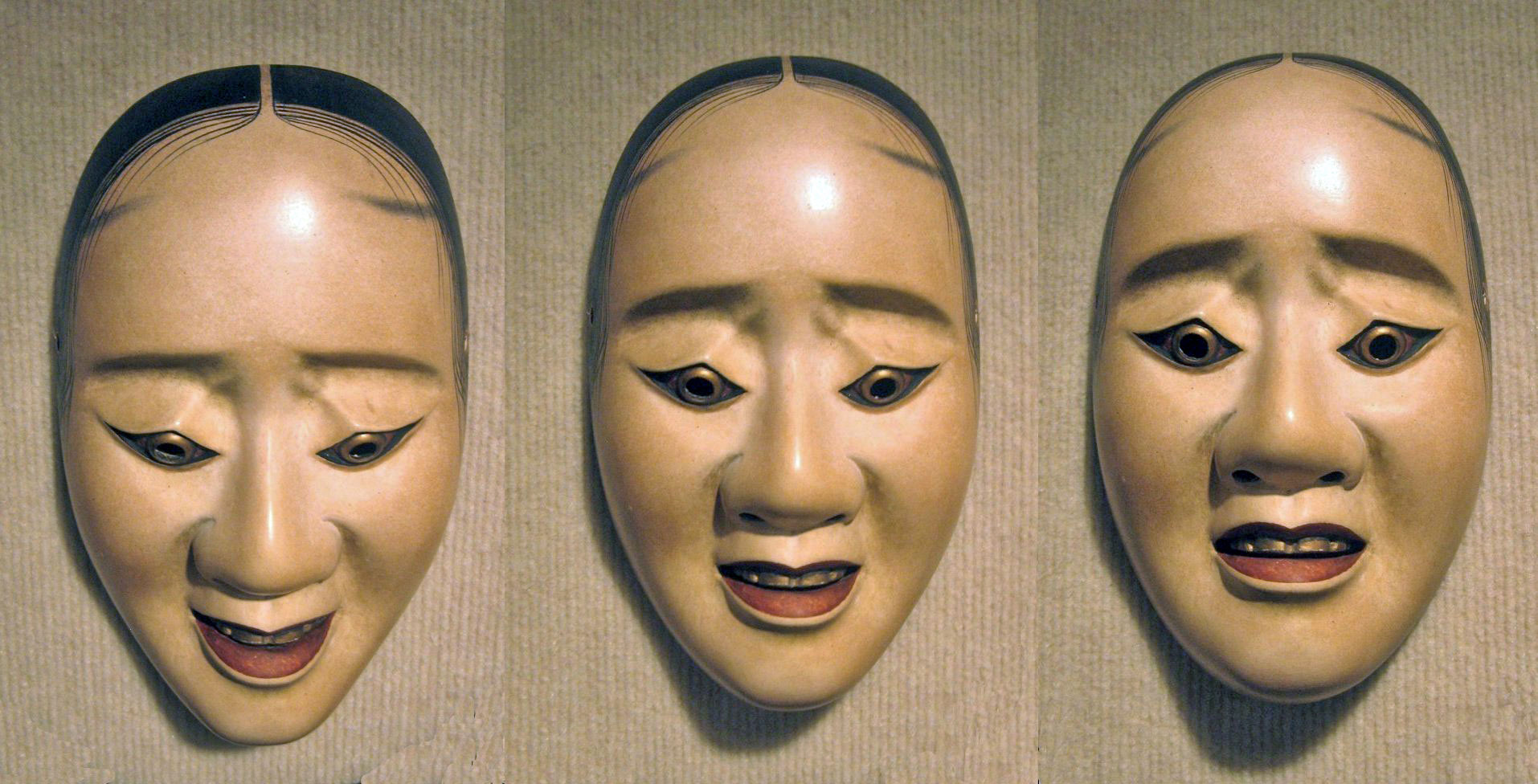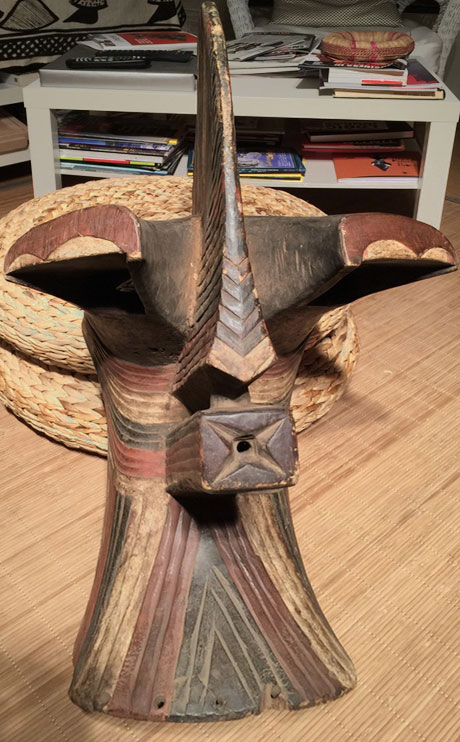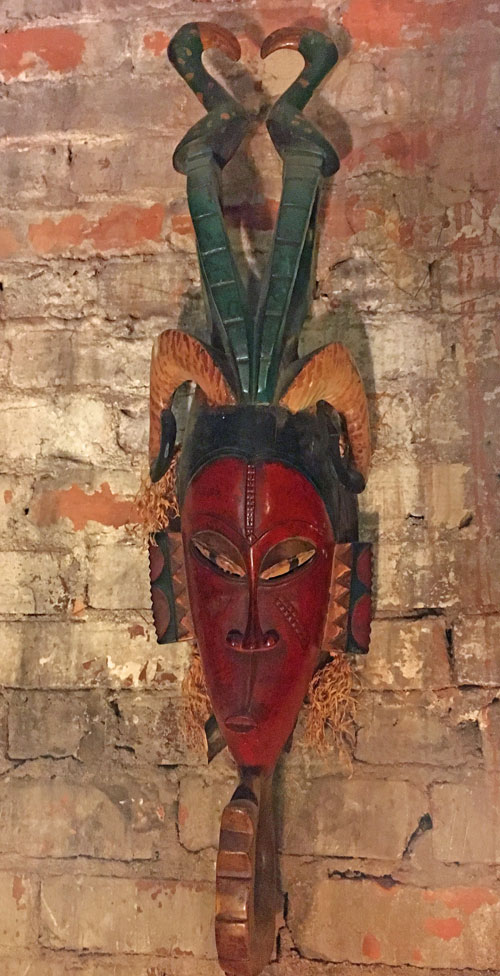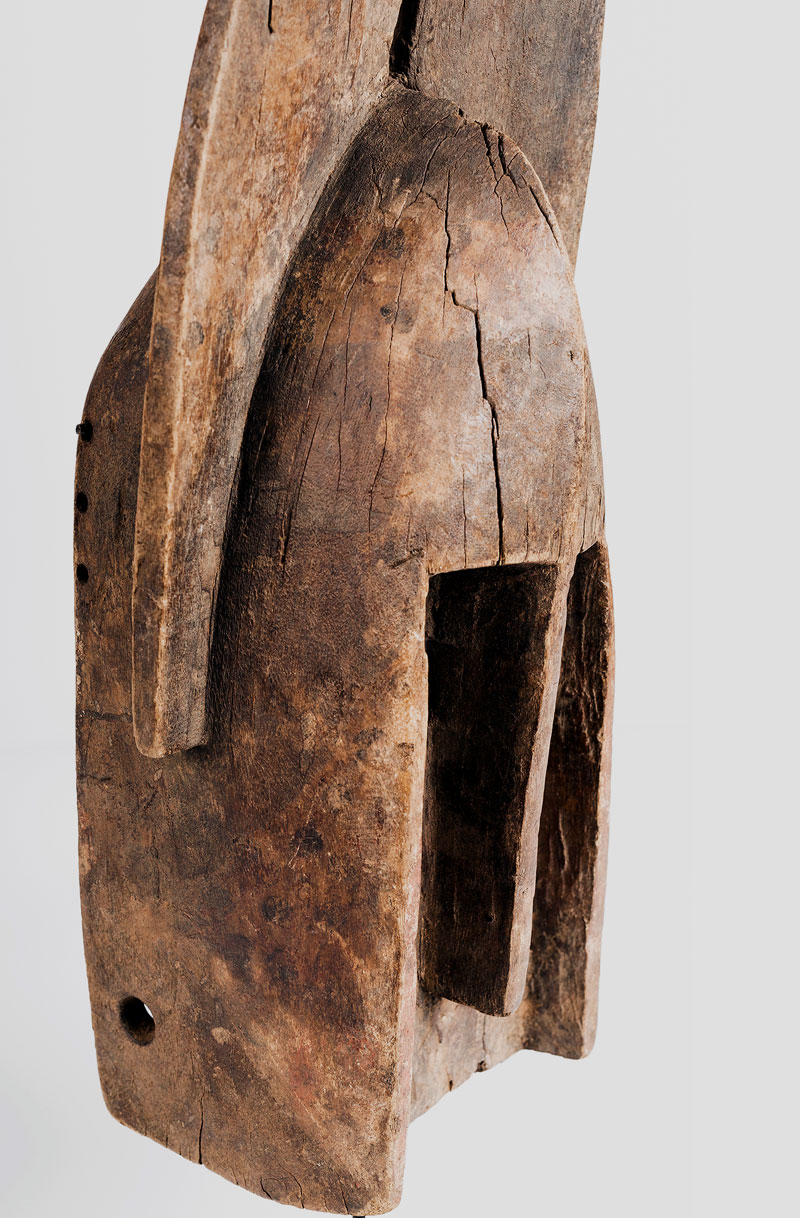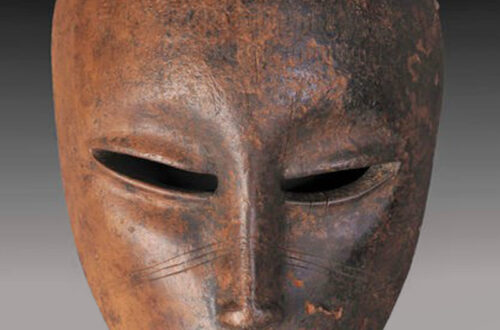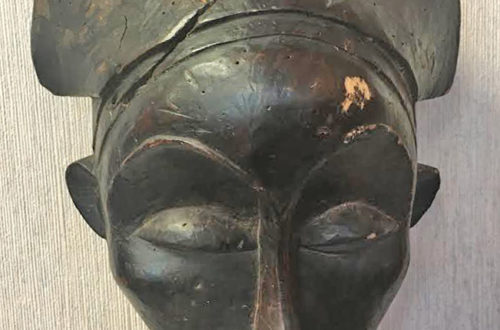Q: I would like to purchase this wooden mask, but I’m unaware of its origins. The owner has a large collection of masks, and couldn’t remember where he picked this one up. He suggested it was either Indonesian or Japanese, though it looks more like an African mask to me. The mask seems to have been made for a child. Paul, 1371 A: This cool little Mexican decorative (tourist mask) is something I would be glad to add my collection, I think, but I wish your photos were better. You can learn more about the famous caiman mask by referring to Mexican Masks by Donald Cordry on page 200. Unlike…
-
-
Dogon kanaga mask from Mali
This is what the Metropolitan has to say about a similar mask… “One of the most popular types of masks in the Sanga region is the type known as kanaga. Like other Dogon masks, kanaga masks are worn at rituals called dama, whose goal is to transport the souls of deceased family members away from the village and to enhance the prestige of the deceased and his descendants by magnificent masked performances and generous displays of hospitality.” “In 1935, French anthropologist Marcel Griaule witnessed a dama ritual in which twenty-nine out of a total of seventy-four masks were of the kanaga type. These masks are characterized by a wooden superstructure…
-
The only Micronesian mask
Masks are very rare in Micronesia. Traditionally they are only found on the Satawan Atoll in the Mortlock group of islands. (Melanesia and Indonesia have thousands of different masks.) This typical example is made of breadfruit wood painted white using lime and black using soot. This wood mask has narrow eye-slits and a plaited coconut fiber cord for securing it to the wearer’s head. It is over 100 years old. Such masks represented an ancestor. They were used as ornaments in the ceremonial house and sometimes in boat houses. The ceremonial house was the location of performances by members of a secret society, in which the god of wind was…
-
Diablo from Oaxaca, Mexico
I could not resist sharing this photo of an old Oaxacan mask with you. It has so much character, despite it’s rough appearance. Devils can’t be nastier than this one! Located on the edge of the Pacific in southern Mexico, the state is rich with many kinds of wonderful masks. Part of the reason is there are many ethnic groups (Mixtec, Zapotec, Chatino, Negro, Huave, Chontal) in the area. More info is needed. What part of Oaxaca does it come from? A
-
Kuba Bwoom mask from the DRC
Q: I recently became interested in collecting African masks and have brought few books on the subject. Unfortunately, I’m still pretty lost on dating and evaluating them. I saw a few masks at an estate sale and am wondering if you can give me some guidance. Thanks! David, 1367 A: This is a Bwoom mask from the Kuba people of the Democratic Republic of the Congo.The Kuba are a large group of different tribes and their masks come in many different styles. The Bwoom is usually a helmet masks with much bead work. This one is low in beads and color, but is well designed and crafted. B-
-
Chokwe Pwo mask
Q: Re-arranging my masks around on the walls, I realized I had no information on this mask. It was given to me by my husband as a gift many, many moons ago. He bought it from a dealer in Essex, Ct who sold masks. Only thing I can say…it’s light weight wood and appears to be in good condition. Would appreciate information. Mickey, 1366 A: Masks styled after the famous Pwo mask of the Chokwe tribe in Angola, West Africa, are very popular with collectors. Many are available on the internet for an affordable price. I would give yours a value of B-. The second photo is of a…
-
Ancient Egyptian wood mask
Probably older than 1000 BC, this beautifully carved face mask comes from the inner coffin of a large ancient Egyptian sarcophagus. It would have been painted over with a layer of gesso and linen. All of this is long gone because of poor conditions in the tomb where it was buried. Very nicely mounted and photographed. Sometimes great aging can be very appealing. What I don’t like to see is masks that have been artificially aged to fool the collecting market. 1365
-
Big bird from Borneo
This is a rough but colorful hudoq mask. In the Dayak language hudoq means hornbill bird. These famous masks are worn during agricultural ceremonies and to welcome important guests. Like so many ethnographic artifacts from around the world, the design is highly abstracted art that can only be understood by members of the culture. The colors are always a strong red, white and black. Collectors love to display them and they are always in demand. 1364
-
Bobo mask with beak and horns
Q: I bought this rather large masks at a flea market where an African man was selling several masks from his van. It is around two feet long. I paid fifty dollars for it, but now am wondering if I made a smart purchase or not. Any opinions? Fred, 1363 A: This is a reproduction of mask that the Bobo people of Burkina Fasso made for sale to exporters or tourists. It has been artificially aged and is recently made. Fifty dollars is a fair price. My knowledge of West African traditional art is limited so I can’t explain why it would combine the features of an antelope and a…
-
Old Dogon masks from Mali
This Dogon mask representing a rabbit is about 40 years old. I’m not sure about the second one.The Dogon people have created more than eighty mask types to represent characters in their cosmic myths. They are worn in large numbers in funeral dances. The Dogon use such dances to lead the homeless souls of the deceased to their final resting places in the world of spirit, where they become part of the ancestor realm. Certain masks act out stories in addition to dancing. An example of this is the dyommo mask (rabbit) which performs with the dannana mask (hunter). The hunter pretends to hunt the several rabbit masks performing with…
